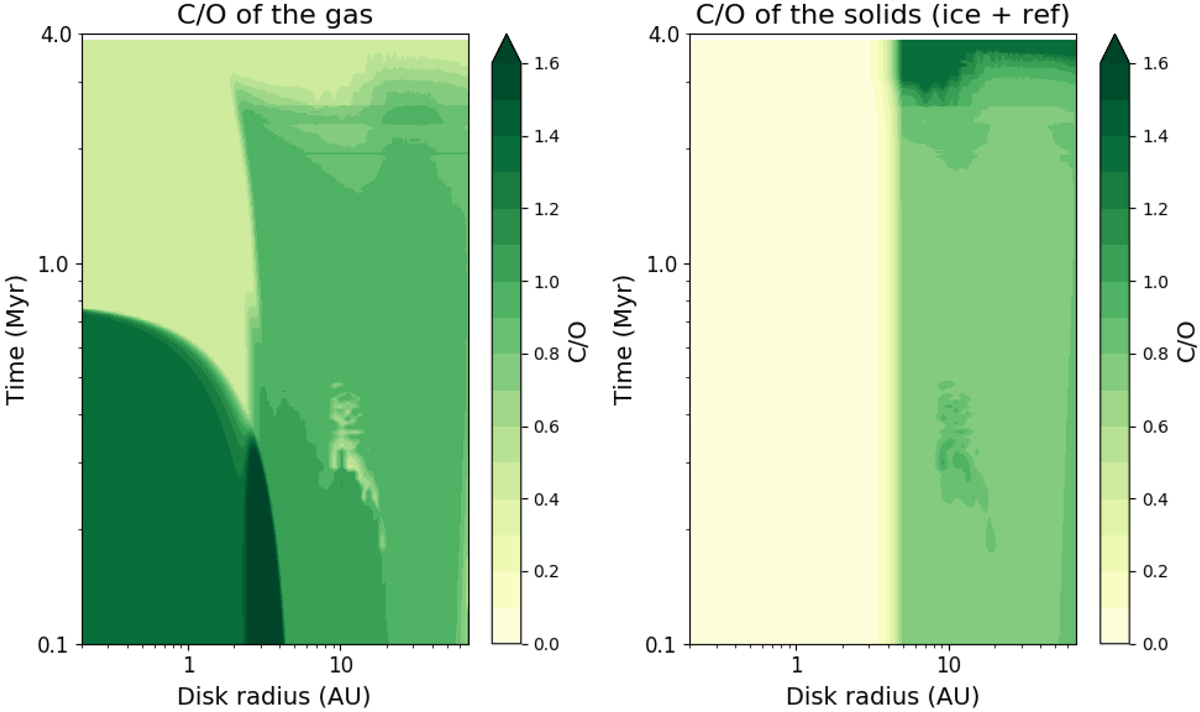Fig. 5

Carbon to oxygen ratio (C/O) of gas and dust (ice and refractories) for a disk model in our population. The gas disk has a higher C/O than unity for ~ 0.5 Myr until the disk has cooled slightly. The ice is almost exclusively oxygen rich, apart from a region of the inner disk at late times caused by the slow production and freeze-out of long chain hydrocarbons. We included the excess carbon from the reset model, which eventually disappears after nearly 0.8 Myr. The solids in the region of the disk in which the carbonaceous dust is eroded is always oxygen rich, since the silicates remain in the dust grain while the carbon is removed. C/O changes most at the ice lines of the disk, particularly the water ice line between 2 and 3 AU. The CO ice line is located outside of 60 AU, and hence does not show up in the figure.
Current usage metrics show cumulative count of Article Views (full-text article views including HTML views, PDF and ePub downloads, according to the available data) and Abstracts Views on Vision4Press platform.
Data correspond to usage on the plateform after 2015. The current usage metrics is available 48-96 hours after online publication and is updated daily on week days.
Initial download of the metrics may take a while.


